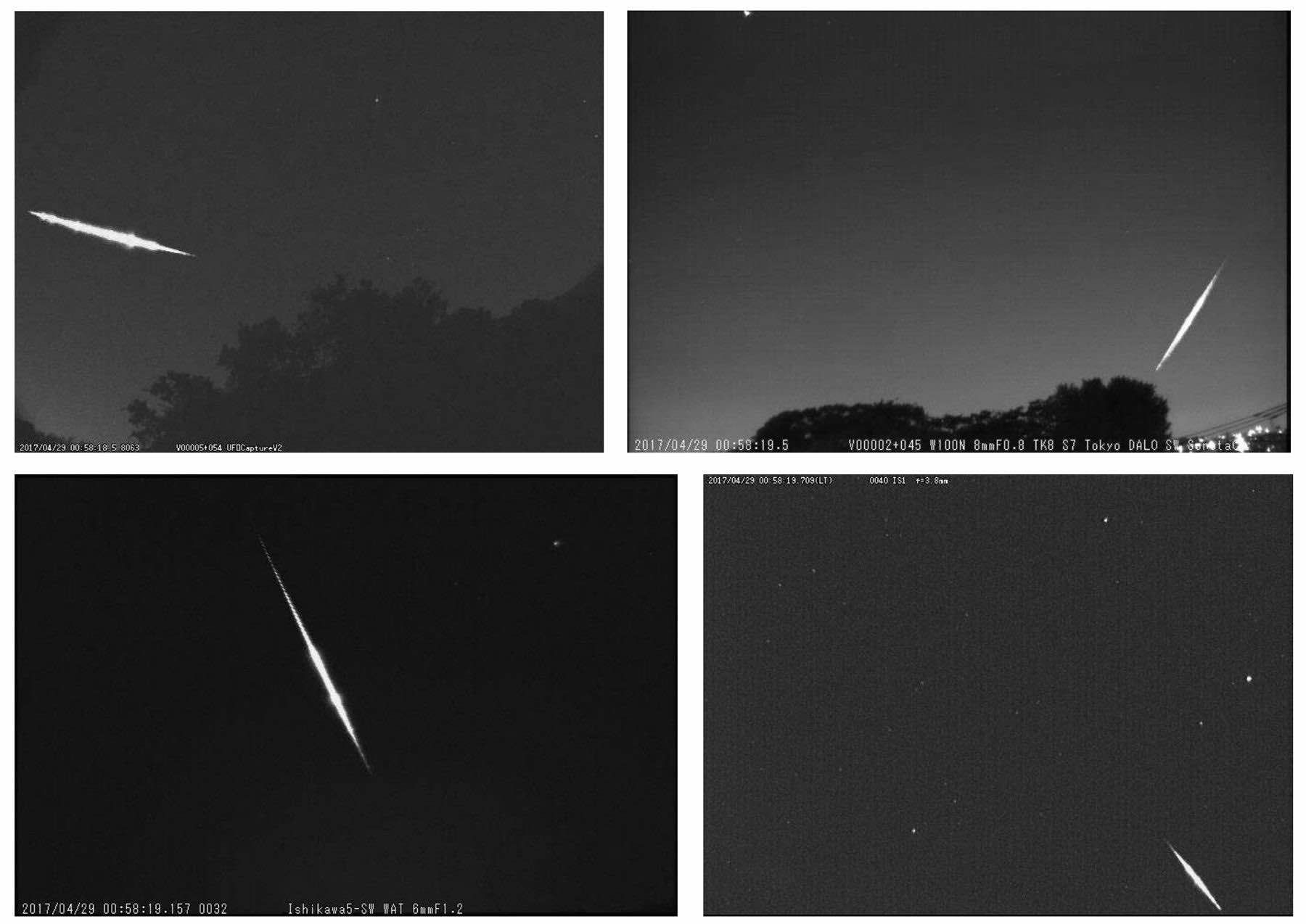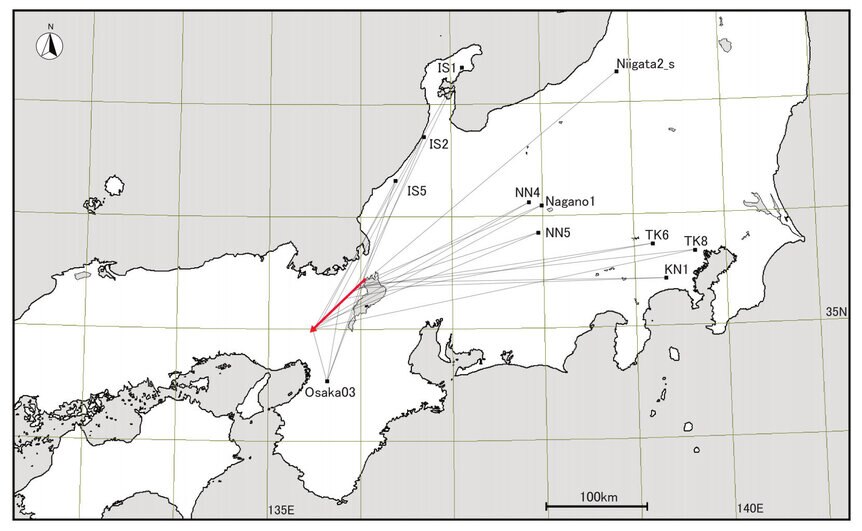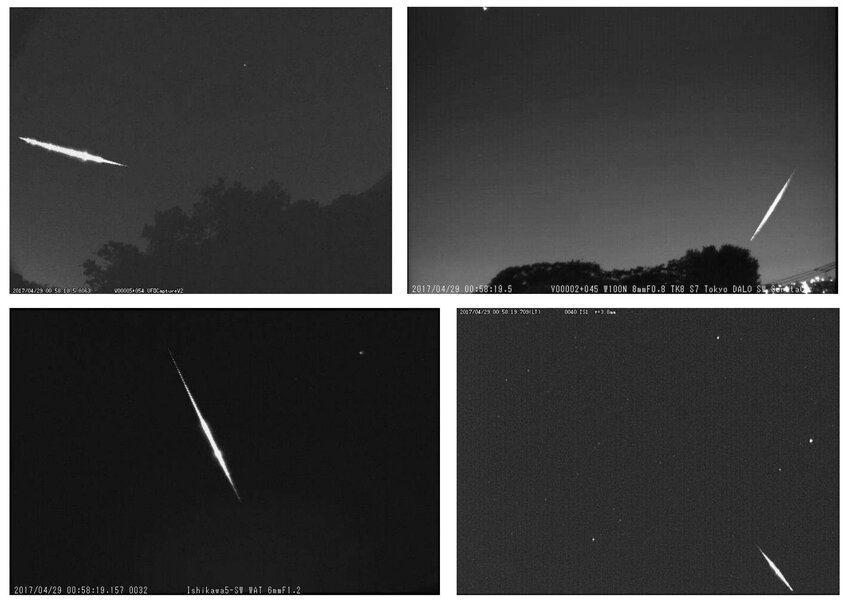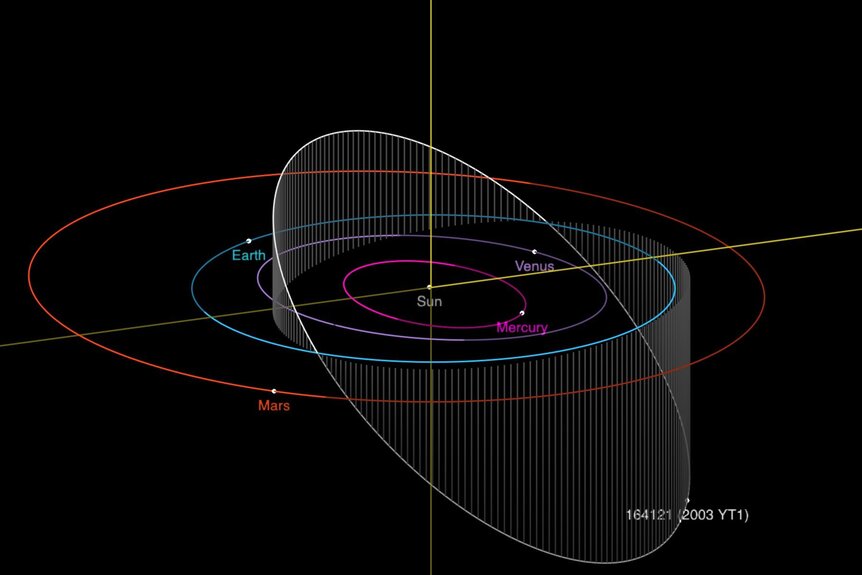Create a free profile to get unlimited access to exclusive videos, sweepstakes, and more!
Tracing a bright fireball back to its parent: the potentially hazardous asteroid 2003 YT1

In 2017, a bright fireball burned up over Japan. If you had been standing right under it you would've seen it zip across the sky in a few seconds, getting as bright as Venus to the eye.
That's fairly typical for very bright meteors, but this one gets more interesting. It was caught on camera by 12 of the 27 cameras making up the SonotaCo Network, which watch the skies over Japan for just such an event. Astronomers then used all that data to backtrack the trajectory of the meteoroid*, which can then be used to calculate its orbital path before it hit us. What they found is a near-perfect match to the orbit of a small asteroid called 2003 YT1!
That's where this story gets interesting indeed. 2003 YT1 is a near-Earth asteroid, on a tilted and elliptical orbit that takes it about 14 months to move around the Sun. That orbit gets very close to Earth indeed; it can potentially get within a mere 400,000 kilometers of Earth! That's as close as the Moon, for comparison. It's biggish, too, about 1–1.7 kilometers in size. Together with its ability to get close to us, that makes it a Potentially Hazardous Asteroid, one capable over long periods of time to impact Earth and cause a large amount of damage.
To be clear, no such impact is in the cards for a long, long time (there's a 6% chance of an impact over the next ten million years), but the fact that the 2017 fireball appears to have come from it is … odd. The astronomers find, given its brightness and assuming it's made of rock, that the meteoroid itself was about 2.7 centimeters wide and had a mass of 29 grams (about half the size and weight of a golf ball).
It must have been sitting on the surface of the asteroid, then for some reason got ejected into space, on a path similar to the asteroid itself but which, over time, intersected our fair green world.
The question then is, how did this happen?
It's possible that the asteroid got impacted by a small piece of debris, something roughly a millimeter across. At orbital speeds, that can provide enough momentum transfer (science speak for "whack it hard enough") to dislodge something under 3 cm across.
But in their paper the astronomers present another possibility that I find fascinating: The asteroid recently (astronomically speaking) got spun up, increasing its rotation enough that it literally started to break apart. When that happened, lots of little pieces flew off, and the meteoroid that burned up in our atmosphere was one of those pieces of debris.
Whoa.
First off, we know this sort of thing can happen. There's a force that acts on asteroids called the YORP effect, where sunlight warming the sunward-facing half of the asteroid applies a small but persistent force on it. The net effect is to speed the asteroid's spin. This process depends on the size of the rock, but for small asteroids it only takes a few million years. We've seen several asteroids suddenly fly apart, surrounded by a cloud of dusty debris, and the culprit is almost certainly YORP.
Second off, asteroids in the size range of 2003 YT1 tend to be rubble piles, loose aggregations of boulders held together by their own gravity. These likely form after a solid body is hit by a smaller one, shattering it. The pieces can then recollect under their own gravity, becoming what is essentially a bag of rocks. The asteroids Bennu and Ryugu, currently and recently visited by spacecraft, are perfect examples of these.
Hmmmm. 2003 YT1 is a small rubble pile, its size making it susceptible to YORP. As it spins faster over time, the centrifugal force outward gets stronger, counteracting the force of gravity inward. At some point, it spins so fast that material can more easily be levitated off its surface.
We have evidence of this for YT1, too! The spin rate is measured at 2.3 hours, which is pretty much right at the break-up rate. Not only that, it has a small moon! It's about 200 meters in diameter and orbits quite close in, at only 2.7 kilometers away. That's exactly what you'd expect from a YORP-forced breakup. It got spinning so rapidly that pieces flew off the asteroid, and these then wouldn't get very far (since the ejection force would be very gentle; remember its spin accelerates over time, but slowly, so the rocks on the surface would feel less gravity slowly over time). Eventually, the ejected rocks would collect to form a smaller moon very close in.
When did this happen? Over time, the tides from the main asteroid, weak as they are, would circularize the moon's orbit, and also change its spin to match that of the main mass. That takes very roughly 10,000 years for an asteroid the size of YT1, so the breakup happened more recently than that; possibly much more recently, since the moon rotates roughly once every 6 hours and orbits once every 30 hours, it's nowhere near being synchronous.
Here's the really cool part: The astronomers looked at the debris from such a breakup, particles a few centimeters in size and smaller. Some of this material forms the moon, but a lot of it leaves the asteroid entirely. Pressure from sunlight pushes on the small bits (think grain-of-sand-sized), but bigger ones in the centimeter range can take much longer. It takes about 10,000 years for all the debris to be lost to space.
But that's also at most how long ago the breakup took place!
So now we can put this all together: The fireball seen over Japan in April 2017 was a grape-size chunk of rock from the asteroid 2003 YT1, likely ejected when the slow but persistent force of sunlight on the asteroid spun it up to a point where debris flew off, forming a moon and a cloud of material around it, one small chunk of which headed right down into our atmosphere and burned up!
Cooooooool.
I'll note that this is an intriguing explanation, but not the only one. Bennu has been seen spitting rocks into space, and the cause isn't known, though several have been proposed. It's possible this is what's happening with YT1 as well.
But either way, it's amazing that we can do such things now, to figure out the origins and life cycle of a meteor. I've seen hundreds if not thousands of meteors over the years, including one fireball so bright it left an afterimage on my eye. Now, whenever I see one, I'll wonder if it came from some nearby asteroid that, over time, pirouetted ever more rapidly due to sunlight, nearly spinning itself to death while flinging bits of itself into space.
The Universe is just so amazing. Even — maybe especially — the parts so close to home.
*The bright flash of light we see is the meteor, the solid bit of rock or metal burning up is the meteoroid, and if it makes it to the ground it's called a meteorite. This guy can tell you more.





























